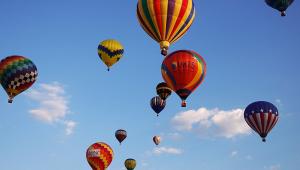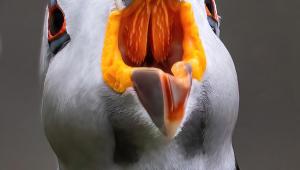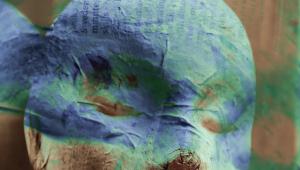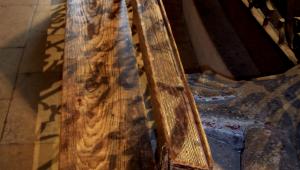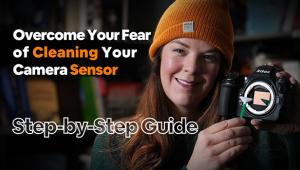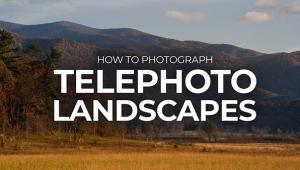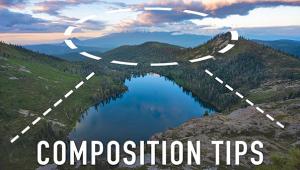HP Photosmart R707; Can In Camera Features Improve Your Images? Page 3
Making Seamless Panoramas
Several digicams include a panorama assist feature, useful for recording an
extensive area of a landscape or a city scene. Shoot several individual frames
and you can later "stitch" them together into a single long/narrow
picture using the bundled software. This feature can work well, but for optimal
results, you must work very carefully to avoid missing a part of the scene.
After downloading the images to a computer, use the correction features provided
in the software to make a panorama that's seamless without missing elements
or poor connections.
 |
|
|
With the HP R707, creating panoramic
pictures is virtually foolproof. Select the Panorama mode with the Program selector
button on top of the camera. Shoot the first frame, and a ghosted section of
a portion of the image appears on the LCD monitor. Line that up with the appropriate
subject element in the scene, and take the next shot. Continue doing so for
up to five frames. The in camera software will then automatically align and
merge the edges of each photo. Afterward, you can scroll through the entire
panorama on the LCD monitor, a feature that's exclusive to HP. If there
is a gap (missing section) you'll know immediately and you can re-shoot
the scene to get it right.
After the images are downloaded to a computer, the HP Image Zone software automatically
identifies all images made in Panorama program and activates Arcsoft Panorama
Maker. The appropriate frames are then stitched and a panoramic picture is generated.
Nothing could be simpler or more convenient. Although Panorama Maker 3 includes
a "fine-tuning" tool for correcting poor seams between individual
images, I never needed to take advantage of this feature.
Evaluation: Except in bright light, it's quite easy to see the ghosted
area on the LCD monitor, using it as a guide to accurate framing for each subsequent
shot. The camera produces good to very good exposure and white balance for the
entire series. Finally, the intelligent Arcsoft program does a great job of
stitching individual frames together and cropping any extraneous areas after
making the necessary adjustments for user error.
Final Assessment
When compared to earlier HP models, the Photosmart R707 offers a faster LCD
monitor refresh rate; it's still not quite a "live view" when
you change a composition, but it's close. This camera also provides faster
response with a more tolerable one second shutter lag, even more reliable autofocus,
and moderately fast processing time in the highest JPEG quality level. I found
only one issue worthy of a complaint. Some of my user-selected settings reverted
to the default setting whenever the camera shut down to conserve battery power.
Image quality is about average for a 5-megapixel camera with a small (7.18x
5.32mm) sensor. Digital noise is low at ISO 100, noticeable at ISO 200, and
obvious at ISO 400. Images made in the best JPEG quality capture, in the camera's
default modes, exhibit slight underexposure, moderately high-resolution, pleasing
white balance, and excessive sharpness. For even better results, it's
worth selecting the low sharpening level. Color saturation is high, and very
high in images made with flash on overcast days with the in camera Contrast
level set to high for snappy contrast. I was able to make excellent 8.5x11"
glossies and good 10x13" prints from the technically best images.
This handsome, pocketable 5-megapixel camera with classy lines and a stainless
steel front panel is a great entry-level model but it includes enough advanced
capabilities, plus the highly desirable Panorama feature, to attract some photo
enthusiasts. The Adaptive Lighting and Redeye Removing capabilities make it
suitable for anyone who wants technically superior images, particularly for
printing direct from the camera or its memory card. The first HP model to combine
valuable new technologies, the Photosmart R707 is also an indicator of even
more technically sophisticated cameras that we can expect to see in the near
future.
A long-time "eDigtalPhoto" and "Shutterbug" contributor, stock photographer Peter K. Burian is the author of "Mastering Digital Photography and Imaging." This 270-page book covers all aspects of the topic and provides a great deal of practical advice.
Facts
· Sensor: 1/1.8" CCD with 5.1 million
recording pixels
· Lens: 39-114mm f/2.8-4.8 (35mm equivalent); up to 8x
digital zoom additional
· Viewfinder And Monitor: Optical finder; 1.5"
LCD monitor
· Focusing: Single Shot autofocus; macro, infinity and
manual focus
· Sensitivity: ISO 100, 200 400 and Auto
· Storage: SD/MMC Card
· White Balance: Five options plus manual
· Flash: Built-in; Auto, anti redeye, slow sync, forced
flash
· Shutter Speed Range: 16 to 1/2000 sec
· Connectivity: USB
· Power: Single use CP1 battery; proprietary lithium
ion battery and charger/AC adapter, included
· Dimensions/Weight: 3.78x2.36x1.38"; 0.4 lb
· Software Included: HP Image Zone, ArcSoft Panorama
Maker, Greeting Card Maker
· Minimum System Requirements: USB compatible Pentium
III or Celeron PC with Windows 98 to XP, or Mac OS X 10.1.5, 10.2 or higher;
128MB RAM
· Street Price: $329
Contact
Hewlett-Packard
(650) 857-1501
www.hp.com
- Log in or register to post comments


